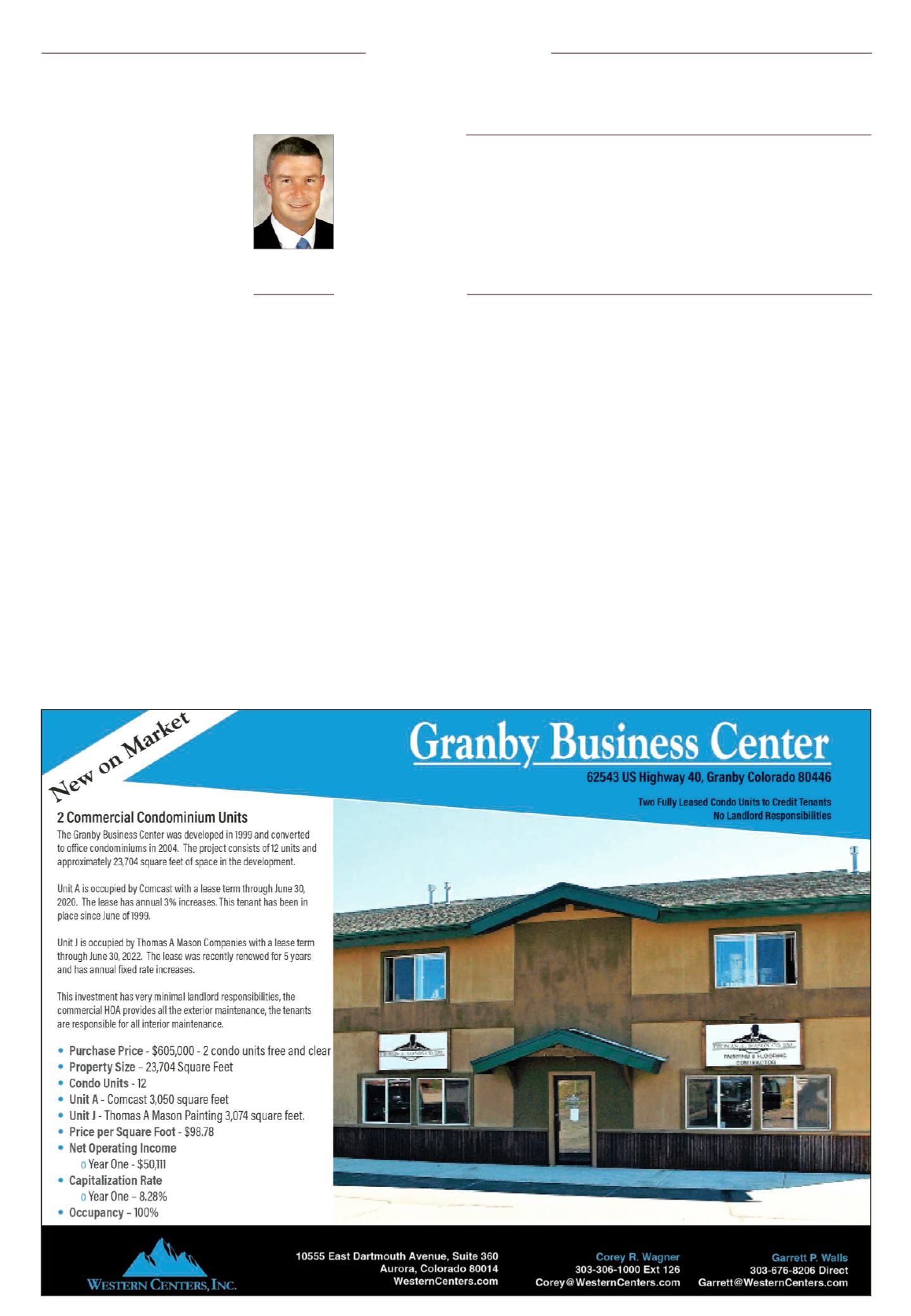

Page 20
— Retail Properties Quarterly — November 2017
www.crej.comI
n the world of Amazon and
online shopping, we often
think that buying something
for cheap is a deal. Similarly, it
is easy to think that the cheap-
est insurance quote is the best. This
stems from viewing insurance as a
liability, somewhat like taxes, rather
than an asset that is purchased to
protect the business against possible
loss.
Insurance is a relatively small
investment to protect against a
potential future loss. For the cost
of an insurance premium, one can
allocate the risk of losing a property
(in the case of a fire) or losing signifi-
cant money (in the case of a liability
claim) to the insurance company.
The costs of insurance premiums are
related to the amount and types of
protections or coverages purchased.
Simply shopping for the cheapest
policy may leave substantial gaps in
coverages and significant exposures
that can have catastrophic effects if
disaster strikes. Instead, focusing on
a transfer of risk that fits the needs of
the insured will help identify cover-
ages that are most relevant and nec-
essary to protect against the financial
effects of a significant disaster.
•
Education is key.
Understand the
key elements of a standard property
insurance policy and ask qualifying
questions when buying insurance. No
insurance policy covers everything.
It is just as important to understand
what the insurance policy does not
cover as it is to understand what is
covered.
It is important to identify the fol-
lowing. First, what are the major
coverage gaps?
Some of the most
common in prop-
erty policies are
actual cash value
(pays only the
depreciated cost
and difference
must be met by the
insured), code or
law and ordinance
(costs that will be
incurred to bring a
building up to cur-
rent building code), underinsured and
shortfalls in extra expense and busi-
ness income losses related to prop-
erty damage.
Second, what is excluded? Certain
types of claims are excluded under
many common insurance policies.
Some of the common exclusions are
flood, some types of water leaks, test-
ing and mitigation for asbestos, mold
and lead, loss due to nuclear action,
terrorism, war, etc.
Third, what is the deductible? The
deductible is the insured’s contribu-
tion to the loss. It is important to
know the amount of the deduct-
ible and have a strategy in place to
cover the cost of it. Deductibles can
be fixed, have separate amounts for
different types of claims or percent-
age deductibles (percentage deduct-
ibles are a percentage of the whole
amount of policy coverage not a per-
centage of the loss or claim). Know-
ing the amount of the deductible and
having a plan for paying it is critical.
•
Have a loss protocol in place.
When
a loss takes place is the worst time
to determine how to recover and
find the resources necessary to make
recovery possible. Having a protocol
in advance that properly identify
losses and report them to the insur-
ance company on time can prevent
significant loss to the company.
A good loss protocol involves sev-
eral steps. First, identify a loss and
determine if it is claimable. If a claim
is below the deductible or otherwise
not covered, it may be necessary to
notify the insurance company in cer-
tain circumstances, but otherwise a
claim produces no benefit and can in
some circumstances create additional
difficulty for the insured.
Second, meet the duties of the
insured under the policy. There are
specific requirements in every policy
that the insured agrees to by purchas-
ing the policy. Knowing these duties
and incorporating a strategy to make
certain these duties are fulfilled in
the event of a loss is critical to ensur-
ing the policy benefits are payable.
Third, have a procedure for deter-
mining the accurate value of the loss
and insurance coverage. There are
many fantastic insurance companies
and claims professionals who assist
when a claim takes place; however,
they represent the best interest of
the insurance company and do not
understand your business as you
do. Having resources to ensure your
loss is accurately calculated and
all aspects are properly evaluated
will help make the claim process
a smooth and effective means to
restore your business after a disaster.
•
Use the right tools for the right job.
There are many facets to understand-
ing and identifying risk exposures
and just as many, if not more, to han-
dling losses and ensuring the proper
resolution after a disaster. There is
no one single solution for all risk
management and loss needs, so it is
important to identify resources for
both policy selection and loss reso-
lution.With the right tools in place,
property owners and managers will
be able to quickly identify the neces-
sary insurance and have the resourc-
es to quickly and effectively recover
from a disaster.
▲
Recognize insurance as an asset, not a liabilityManagement
Peter O’Brien
President, Solutia
Adjusters, Arvada
Some of the common exclusions are
flood, some types of water leaks, testing
and mitigation for asbestos, mold and
lead, loss due to nuclear action,
terrorism, war, etc.
















